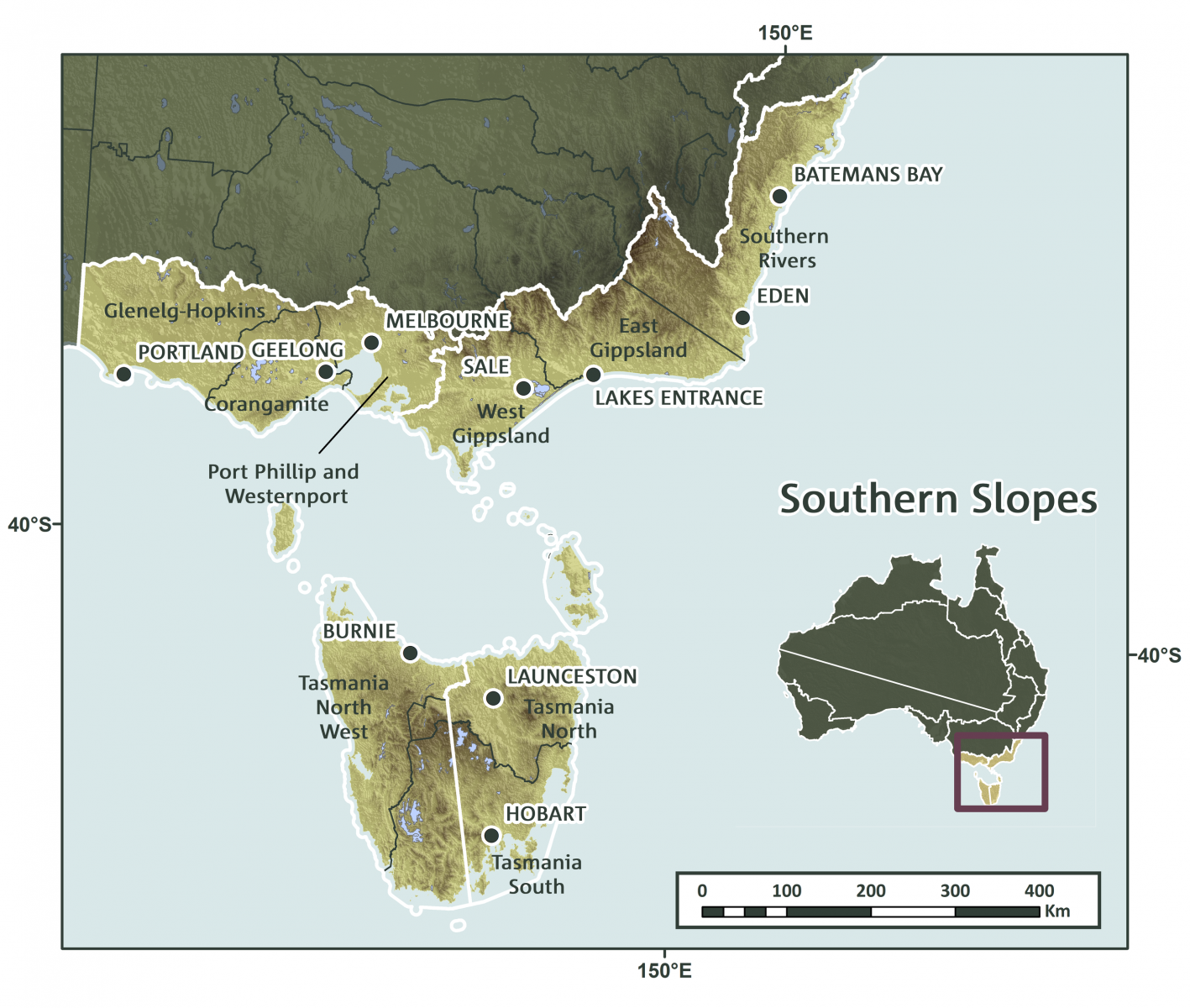Regional Policy
The Corangamite and Glenelg-Hopkins Catchment Management Authority (CMA) have each prepared a Regional Catchment Strategy (RCS) under the provisions of the Catchment and Land Protection Act 1994 (Vic.). The Corangamite RCS (link) and Glenelg-Hopkins CMA (link) is also developed in accordance with the requirements of Commonwealth and State legislation and policies relating to biodiversity, land and water resources.
The process to develop a RCS involves considerable community engagement. The RCS provides the foundation for investment decisions to achieve improved outcomes for the region’s natural resources. The approach begins by determining the high value natural resources which are a priority for protection, restoration and enhancement, and identifies desired outcomes at a regional scale.
Climate change is identified as both a key challenge and opportunity for both CMAs.
To address these challenges and opportunities, the CMAs have developed plans to address climate change and its impacts on natural assets within the south-west. The Cornagmite NRM Plan for Climate Change (link) and Glenelg-Hopkins NRM Plan for Cliamte Change (link) also provide support to incorporate climate change mitigation and adaptation into future versions of each respective CMA's RCS and other regional NRM plans, as well as to build on the south-west’s already increasing knowledge on the impacts of climate change.
Funding to develop the plans was provided by the Australian Government’s NRM Planning for Climate Change program, delivered by the Department of the Environment (Biodiversity Conservation Division) and came in two streams.
Stream 1 came directly to the CMAs to develop their plans. Stream 2 was delivered through the Southern Slopes Climate Change Adaptation Research Partnership (SCARP), a collaborative partnership between the Department of Economic Development, Jobs, Transport and Resources (DEDJTR), RMIT University, University of Tasmania (UTS) and Monash University. The SCARP project worked closely with the CMAs and other CMA/NRM regions within the Southern Slopes Cluster (SSC), to translate current climate change information from the CSIRO and other sources, into formats that could be readily applied to develop climate change adaptation plans. A map of the SSC is provided below. More information on SCARP can be found at www.climatechangeinaustralia.gov.au/en/impacts-and-adaptation/southern-slopes/

In developing the plan, the CMAs were required by the Australian Government to address the following three principles:
Principle 1 - Identify priority landscapes for carbon plantings and strategies to build landscape integrity and guide adaptation and mitigation actions to address climate change impacts on natural ecosystems.
Both plans identify and prioritis areas for a variety of carbon sequestration types. Vulnerable areas of the region’s natural assets have been identified and appropriate adaptation and mitigation actions have been developed at a regional scale. These actions set the foundation for ensuring the soyuth-west's landscapes are more resilient and adaptive to climate change into the future.
Principle 2 - The planning process is logical, comprehensive, and transparent.
The process for developing the plans considered previous documents including the each CMA's RCS and its sub strategies, as well as relevant national and state policies, agreements and strategies. The web portal component is designed to be dynamic to enable regular information updates, ensuringboth plans promote an adaptive approach to climate change.
The planning process has been comprehensive with information from international (IPCC), national (CSIRO) and state (DELWP) sources combined with regional and local information. This provides a solid basis for guiding informed decisions on the south-west region’s natural assets under a changing climate.
This plan has been developed, in cooperation with other CMAs, state and federal governments and key regional stakeholders.
Principle 3 - Use best available information to develop actions in collaboration with government, community and other stakeholders.
The CMAs worked collaboratively with other CMAs in developing their plan. Examples included establishing the Victorian CMA NRM Planning Forum, developing a state-wide web portal showcasing CMA climate change adaptation and mitigation projects and research partnership projects relating to climate change mitigation (i.e. blue carbon) and adaptation (i.e. spatial vulnerability assessment).
More information on regional climate change planning can be found here (link).








